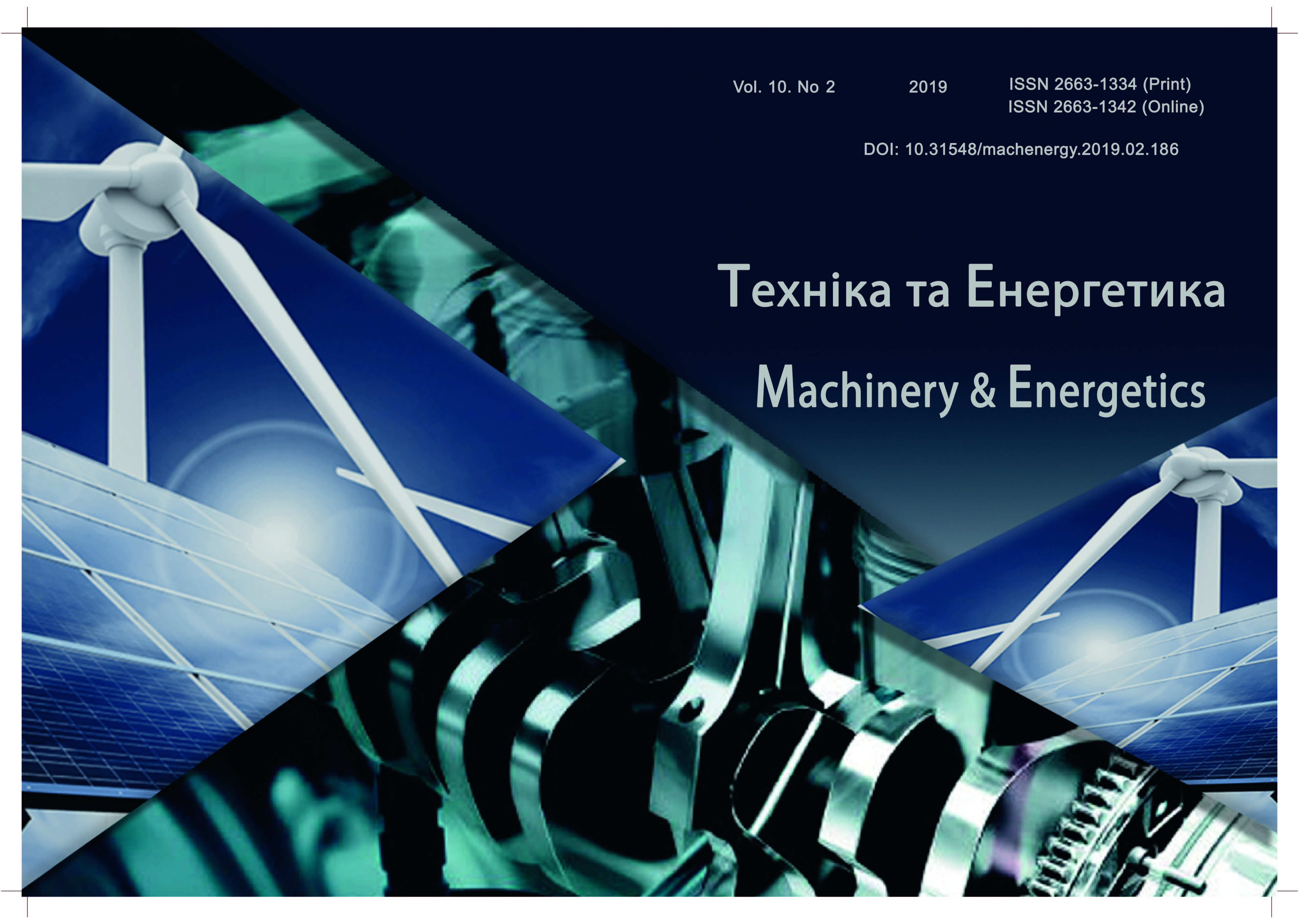Modular poultry farming in industrial breeding with using an energy efficient heating system
DOI:
https://doi.org/10.31548/machenergy2019.02.077Keywords:
energy-efficient, infrared heating sys-tem, air heating system, module for poultry breeding, thermal power, poultry.Abstract
Energy-efficient heating systems for poultry houses are infrared heating systems. With the correct location of infrared emitters heating occurs only in the zone where the poultry is located and the need to heat the entire poultry house disappears. In this way, it is possible to achieve the necessary zoo-hygienic parameters in the zone for breeding of young chicken, without increasing indoor temperature, and if it is possible, lowering it. On the basis of principle of sectional poultry breeding the modular breeding of chicken broilers is proposed. The heating system of the module is a panel infrared heater, intended for local heating of the growing zone. To ensure a constant inflow of fresh air and assimilation of harmfulness in the module provides an inflow and exhaust ventilation system.
Modular poultry breeding allows to use modules as well as in industrial poultry farming, and within individual farms. As the industrial method of poultry breeding involves the accumulation of a large amount of poultry in one poultry house, there is a possibility of emergence and rapid spread of infectious diseases. Due to the local microclimate provided in the module for poultry breeding, it is possible to prevent this negative phenomenon. In addition, there is an opportunity to keep multi-year poultry categories in one poultry house and to provide a temperature regime as the growth of poultry.
In this paper the study of temperature regime in the module at the change of thermal power of a heater was described. The results of experiment show that the greatest influence on the value of relative air temperature have thermal power of infrared heater and air velocity in module. At constant values of height of a heater installation and air velocity, and with increasing the heat capacity of heater twice, value of relative air temperature will increase by 3.8%.
Due to the use of energy-efficient infrared heating system, it was possible to reduce annual expenses related to the purchasing feed by 11.7% and increase cost of final product of chicken-broiler by 12.8%.
Based on technical and economic calculations, the use of modular poultry breeding with the infrared heating system was substantiated. This confirms the wide possibilities of implementation energy-efficient infrared heating systems.
References
Onegov A. P., Dydyriev Yu. I., Habibulov M. A. (1975). Handbook of Hygiene of Farm Animals. Rosselkhozizdat. Moscow.
Zakharov A. A. (1980). Application of heat in agriculture. Kolos. Moscow.
DBN V.2.2-1-95. (1995). Buildings and structures for livestock breeding. State Committee on Construction. Kyiv.
Zhelykh V., Ulewicz M., Spodyniuk N., Shapoval S., Shepitchak V. (2016). Analysis of the Processes of Heat Exchange on Infrared Heater Surface. Diagnostyka. Vol. 17, No 3. 81-85.
https://doi.org/10.17512/bozpe.2016.1.12
Yurkevich Yu., Spodyniuk N. (2015). Energy-saving infrared heating systems in industrial premises. Budownictwo o zoptymalizowanym potencjale energetycznym. Częstochowa. Poland. Vol. 16. 140-144.
Shepitchak V., Savchenko O., Spodyniuk N., Zhelykh V. (2015). The study of temperature fields in exposure zone of the rotary infrared heaters. Budownictwo o zoptymalizowanym potencjale energetycznym, Częstochowa. Poland. Vol. 15. 178-181.
Shcherbovskykh S., Spodyniuk N., Stefanovych T., Zhelykh V., Shepitchak V. (2016). Development of a reliability model to analyse the causes of a poultry module failure. Eastern-European Journal of Enterprise Technologies. Vol. 4. No 3(82). 4-9. DOI: https://doi.org/10.15587/1729-4061.2016.73354
Spodyniuk N., Zhelykh V., Dzeryn O. (2018). Combined Heating Systems of Premises For Breeding of Young Pigs And Poultry. FME Transactions. Vol. 46. 651-657.
https://doi.org/10.5937/fmet1804651s
Toledo R. S., Rostagno H. S., Albino L. F. T., Dionizio M. A., Carvalho D. C. de O., Nogueira E. T. (2011). Lysine nutritional requirements of broilers reared in clean and dirty environments during the pre-starter and starter phases. Revista Brasileira de Zootecnia. Vol. 40, No. 10. 2205-2210.
https://doi.org/10.1590/S1516-35982011001000021
Kapalo P., Spodyniuk N. (2018). Effect of the variable air volume on energy consumption - case study. IOP Conference Series Materials Science and Engineering 415. (012027). Poland. 1-7. https://doi.org/10.1088/1757-899X/415/1/012027
Brown K. J., Farrelly R., O'Shaughnessy S. M., Robinson A. J. (2016). Energy efficiency of electrical infrared heating elements. Applied Energy. Vol. 162. 581-588.
Downloads
Published
Issue
Section
License
Relationship between right holders and users shall be governed by the terms of the license Creative Commons Attribution – non-commercial – Distribution On Same Conditions 4.0 international (CC BY-NC-SA 4.0):https://creativecommons.org/licenses/by-nc-sa/4.0/deed.uk
Authors who publish with this journal agree to the following terms:
- Authors retain copyright and grant the journal right of first publication with the work simultaneously licensed under a Creative Commons Attribution License that allows others to share the work with an acknowledgement of the work's authorship and initial publication in this journal.
- Authors are able to enter into separate, additional contractual arrangements for the non-exclusive distribution of the journal's published version of the work (e.g., post it to an institutional repository or publish it in a book), with an acknowledgement of its initial publication in this journal.
- Authors are permitted and encouraged to post their work online (e.g., in institutional repositories or on their website) prior to and during the submission process, as it can lead to productive exchanges, as well as earlier and greater citation of published work (See The Effect of Open Access).

